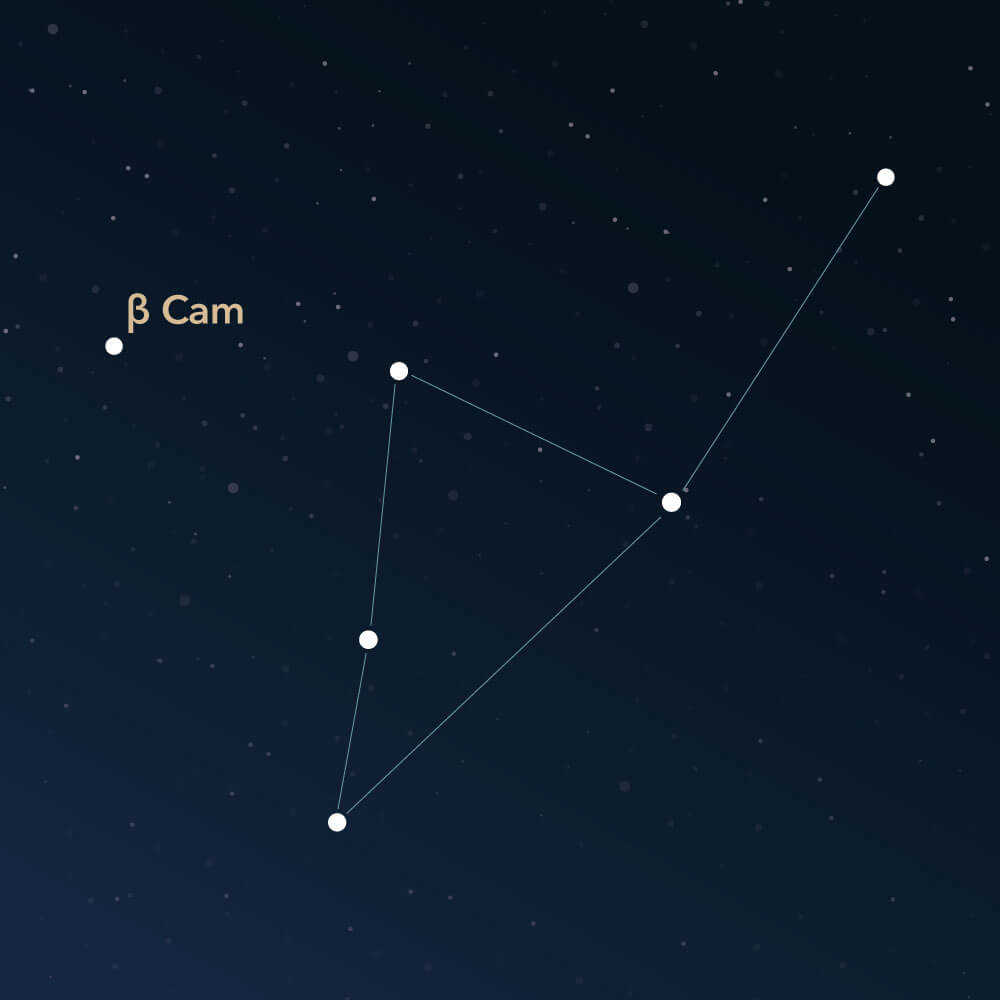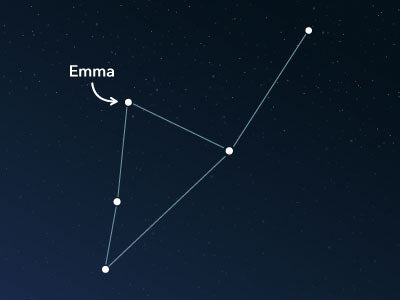The constellation Camelopardalis
Characteristics
- Other names / Symbolism
- Giraffe
- Hemisphere
- Northern hemisphere
- Visibility
- All year round
- Area
- 757 deg²
- Brightest star
- β Camelopardalis (HIP number 23522)
- Specialties
- Galaxies, open star clusters, planetary nebula

The Camelopardalis symbolizes a giraffe and is an extensive yet inconspicuous constellation of the northern sky. Although it does not have exceptionally bright stars, it does contain some interesting deep-sky objects.
Hemisphere, visibility, and area
The Camelopardalis constellation is located in the northern sky and is visible up to just below the equator. In the northern hemisphere, it can be seen from anywhere, while in the southern hemisphere, it can only be observed along the equator as it only appears up to 2° south latitude.
It is circumpolar in northern latitudes, which means it can be observed throughout the year. It can be best seen from November to February from southern regions near the equator.
It stretches over 757 square degrees of the night sky, making it the 18th largest constellation among all 88 constellations.
Despite its size, it is quite inconspicuous, mainly because none of its stars are brighter than the fourth magnitude. The brightest star in the Giraffe is β Camelopardalis (Beta Camelopardalis), short form ß Cam. Its apparent magnitude is estimated to be around 4.03. It is a yellow supergiant located at a distance of about 840 light-years from earth. β Cam is recognized as a single star, although observations show that it has an apparent companion. However, since the two stars do not affect each other's gravity, ß Cam is merely an optical binary star.
There are different visualizations of the Camelopardalis. In some, four stars form a triangle, and a fifth star extends at one side. This outside star represents the Giraffe's neck, while the triangle is the Giraffe's body. In other depictions, only two stars are connected by a line.
To find Camelopardalis in the night sky, it is helpful to look for striking stars and constellations in the neighborhood.
Between the stars Capella in Auriga and Polaris in Ursa Minor, there is a large area with faint stars that marks the Camelopardalis. Those who prefer to orient themselves based on constellations should look for Cassiopeia and the Ursa Major. They are quite prominent and border Camelopardalis directly. Other neighbors include Cepheus, Perseus, as well as Lynx and Draco.
Specialties in the constellation
The Camelopardalis contains some exciting objects for observation.
NGC 1502 is an open star cluster discovered in 1787 by the German-British astronomer William Herschel. It is located about 2,700 light-years away and can already be observed with a larger pair of binoculars.
Several galaxies are also located in the constellation's area. One of them is the barred spiral galaxy NGC 2403, located about 10 million light-years away from the Milky Way and can already be perceived as a hazy patch in binoculars.

The planetary nebula IC 3568, discovered in 1900 by the US astronomer Robert Grant, is also located in the Camelopardalis constellation. It is also known as the Leon Slice Nebula and appears as a bluish circle with a bright blue core.
History
The constellation has only been known since 1613, when the Dutch astronomer Peter Plancius introduced it as Camelopardalis. He probably did so to fill the empty space since, in ancient times, this area was not defined as a constellation.
In 1624, the German astronomer Jacob Bartsch and his son-in-law took over the constellation. However, they interpreted a camel into the constellation, which is mentioned in the Bible as a mount.
PublishedRead more interesting articles

An overview of all 88 constellations
Learn more about all 88 constellations and read interesting information about the mythology, visibility, and features.

Planetarium App
Discover the night sky with our planetarium app!
Available for iOS and Android.

Name a star in the constellation Camelopardalis
Name a star in a constellation and create something that lasts for eternity.